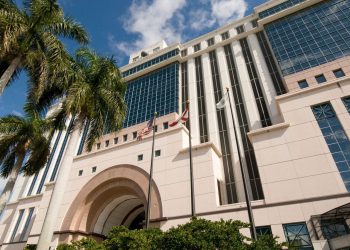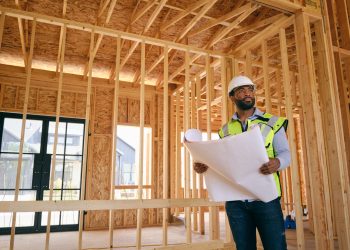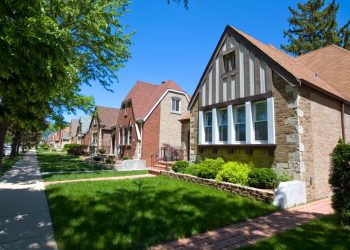Greater frequency of sales doesn’t always bring greater profit. According to a recent report by ATTOM Data, house-flipping across the U.S. during Q1 2022 accounts for 9.6% of home sales, the highest percentage since 2000. This marks a 4.9% increase in sale volume from Q1 2021 and the fifth quarterly increase in a row. Nationwide, the gross profit on house flips during Q1 2022 was $67,000, up 5.5% from Q4 2021 but down 4.3% from Q1 2021. In addition to this decline in raw profit, profit margins from these sales dipped to their lowest point since 2009.
Returns on investment
This $67,000 gross profit represented only a 25.8% return on investment compared to investors’ acquisition price for the flipped house. This is a drop from 38.9% a year prior and marks the lowest profit margins since the Great Recession. It also amounts to less than half of the 21st century profit peak: 53.1% in late 2016.
Why is there this drop in profit? Resale prices are climbing. During Q1 2022, the median price of a flipped home was $327,000, a 30.8% increase from $250,000 during Q1 2021.
Home flipping in metro areas
In 181 out of the 191 surveyed US metropolitan areas, house flipping as a percentage of home sales increased from Q4 2021 to Q1 2022. In 99 of these metros, this was accompanied by a quarterly rate increase of at least 2%.
The top five large metros with the highest flipping rates during Q1 2022 were:
- Phoenix, Arizona (18.7% of home sales)
- Charlotte, North Carolina (18%)
- Tucson, Arizona (16.2%)
- Atlanta, Georgia (16.1%)
- Jacksonville, Florida (16%)
For metro areas with a population less than 1 million, the top five was:
- Durham, North Carolina (15.3%)
- Gainesville, Florida (14.9%)
- Ogden, Utah (13.9%)
- Clarksville, Tennessee (13.4%)
- Winston-Salem, North Carolina (13.4%)
The metro areas with the lowest amount of house flipping were:
- Olympia, Washington (4.4%)
- Portland, Maine (4.6%)
- Salem, Oregon (4.7%)
- Syracuse, New York (4.7%)
- Davenport, Iowa (4.9%)
Profit margins in metro areas
In these 191 metro areas, investor profits dipped from Q1 2021 to Q1 2022 in 139 of them.
The largest annual declines in ROI were found in:
- Salisbury, Maryland (ROI drop from 173.7% to 29.3%)
- Elkhart, Indiana (ROI drop from 148.3% to 24.9%)
- Macon, Georgia (ROI drop from 120.7% to 50.9%)
- Lynchburg, Virginia (ROI drop from 96.2% to 31.5%)
- Flint, Michigan (ROI drop from 126.2% to 64%)
Areas with the largest ROI on home flips during Q1 2022 were:
- Scranton, Pennsylvania (115.5%)
- Kingsport, Tennessee (114%)
- Reading, Pennsylvania (108.6%)
- Pittsburgh, Pennsylvania (105.7%)
- Johnson City, Tennessee (101.1%).
Areas with the smallest ROI on home flips during Q1 2022 were:
- Boise, Idaho (4.4%)
- Fort Collins, Colorado (5.7%)
- College Station, Texas (7.2%)
- Sacramento, California (9%)
- Santa Rosa, California (9.6%)
Regional breakdown
Western and northeastern states saw the highest raw profits on home flips during Q1 2022, with 12 of the top 15 areas being in those areas. The top five were:
- San Jose, California ($420,000)
- San Francisco, California ($220,000)
- Seattle, Washington ($155,000)
- Bremerton, Washington ($150,000)
- Naples, Florida ($145,000)
Southern and midwestern states were on the other end of the spectrum, with 20 of the 25 areas with lowest profit margins being in those states. The bottom five were:
- Syracuse, New York ($16,687)
- Boise, Idaho ($18,662)
- Lubbock, Texas ($19,057)
- College Station, Texas ($19,833)
- Amarillo, Texas ($20,875)
Across 1,064 U.S. counties, 333 of them (31%), home flips account for more than 10% of home sales.
- Gillespie County, Texas (16.9%)
- Greene County, Georgia (15.2%)
- Putnam County, Georgia (15.2%)
- Gaston County, North Carolina (15%)
- Fannin County, Georgia (14.7%)
Investors’ side
It’s impossible to understand this data without looking at these transactions from the investors’ side. Most house flippers buy properties with cash, not financing; during Q1 2022, 62.7% of to-be-flipped homes were bought with cash. This figure is only marginally different from Q4 2021 (62.9%) and Q1 2021 (60.9%).
The 37.3% of investors who buy homes with financing instead of cash will sometimes seek loans backed by the Federal Housing Administration (FHA). However, this is a declining trend; during Q1 2022, only 7.9% of flipped homes were bought with FHA loans. This is the third-lowest quarterly mark since 2007.
Of the 114,706 U.S. homes flipped in Q1 2022, only 7.9% were sold to buyers using loans backed by the Federal Housing Administration (FHA). That was down slightly from 8% in the prior quarter and down from 9.5% in the first quarter of 2021, to the third-lowest quarterly mark since 2007.
The sale of flipped homes during Q1 2022 took an average of 162 days. This is lower than historical averages, but still an increase from 154 in Q4 2021 and 157 in Q1 2021.
The takeaway:
“The good news for fix-and-flip investors is that demand remains strong from prospective homebuyers, as evidenced by this quarter’s report, which shows that one of every 10 homes sold during Q1 was a flip,” said Rick Sharga, executive vice president of market intelligence for ATTOM. “The bad news is that rising mortgage interest rates are beginning to slow down home price appreciation rates, and buyers have become more selective – and less willing to outbid other buyers for properties they’re interested in. This is having a predictable impact on profit margins for investors.”
Sharga added, “As interest rates continue to go up, cash buyers should be in an even greater position of competitive advantage in the fix-and-flip market. It will be interesting to see if the percentage of cash purchases, and purchases made by larger, better capitalized investors, increases over the next few quarters.”











